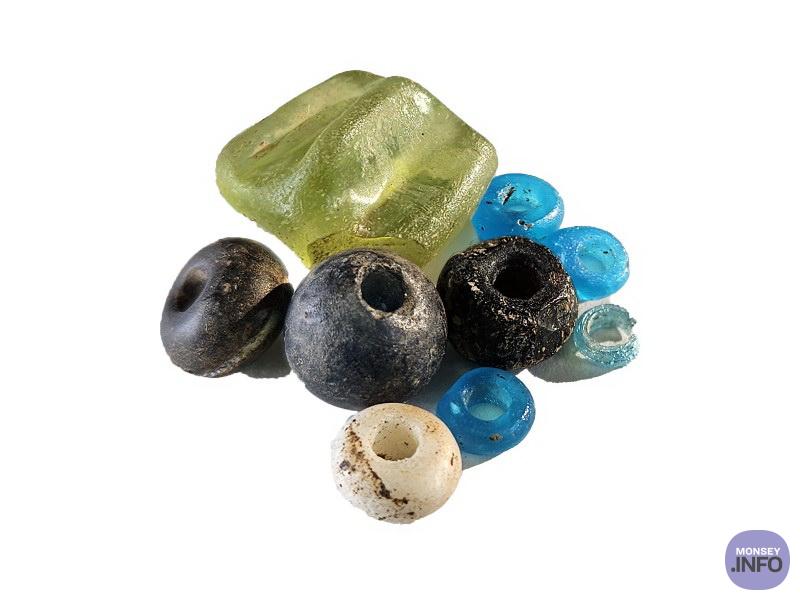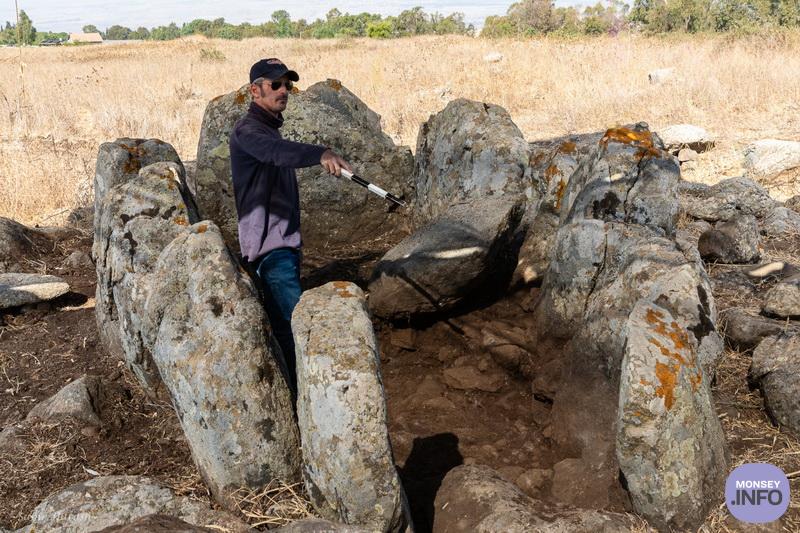
The Dolmens, A Mystery in the Golan
Ornamental artifacts, including colorful glass and stone beads —probably originating from trade with distant regions, a bronze pin, and 4,000-year-old pottery vessels, were recently discovered inside an ancient dolmen, excavated by Uri Berger, Israel Antiquities Authority archaeologist in the Golan.
Dolmens are Middle and Late Bronze Age structures built of huge stones, and prominently visible in the landscape. They comprise a central, stone-paved chamber covered with massive boulders and surrounded by a circular mound of large stones. The archaeological excavation that was directed by Berger on behalf of the Israel Antiquities Authority as part of the expansion of the settlements of Natur and Ani‘am in the Golan shed new light on these intriguing structures.
“Dolmens are monumental burial structures. Ornamental artifacts were placed in the burial chambers as they were believed to accompany the dead in the afterlife. We often find colorful beads as grave goods in the dolmens, but usually we find a single bead, and here, we were surprised to find dozens of beads,” shares Berger. “The variety of finds hints to the great wealth that was probably originally interred in the grave. It seems that most of the finds were looted over the years. Apart from the unusually large number of beads, the relatively large dimensions of the dolmens uncovered here, testify to an exceptional investment of resources in their construction, both in time and raw materials, and may point to a special elevated status of the buried.”
“Interestingly, in Ani‘am, pottery sherds dating from the Roman period were found in the dolmens, dating about two millennia after the dolmens were built. We assume that the dolmens may have been secondarily reused in this period, now for storing agricultural produce, due to the cool conditions in the chamber surrounded by large stones.”
“The artifacts found in the Natur and Ani‘am dolmens help us date the time of construction of the dolmens in the country and the period of time in which they were in use,” summarizes Berger.
Photos: Anastasia Shapiro, Anya Kleiner, and Sapir Haresh, Israel Antiquities Authority















